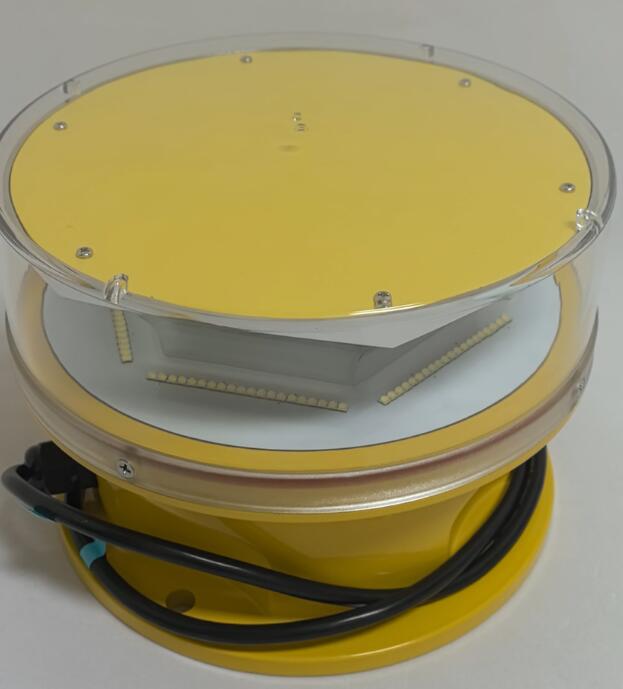The Science Behind Aircraft Warning Light Colour and Aviation Safety
Aircraft warning lights are essential for preventing collisions between aircraft and tall structures such as skyscrapers, communication towers, and wind turbines. Among the most critical aspects of these lights is their aircraft warning light colour, which directly impacts visibility and pilot recognition. Different colours serve distinct purposes depending on the time of day, weather conditions, and regulatory requirements. This article explores the significance of aircraft warning light colour, its role in aviation safety, and the latest developments in lighting technology.
Why Aircraft Warning Light Colour Matters
The human eye perceives colours differently under varying lighting conditions. Red and white are the two primary aircraft warning light colours used globally, each serving a specific function:
Red Lights – Highly effective at night due to their long wavelength, which reduces glare and improves visibility in low-light conditions.
White Lights – More visible during the day and in foggy conditions, making them ideal for high-intensity applications.

Regulatory bodies like the Federal Aviation Administration (FAA) and the International Civil Aviation Organization (ICAO) mandate specific colour usage to ensure consistency and prevent confusion among pilots.
Standard Aircraft Warning Light Colours and Their Applications
1. Red Steady-Burning Lights
Used on structures below 200 feet (61 meters).
| aircraft warning light colour |
Ideal for nighttime visibility.
Common on buildings in urban areas with moderate air traffic.
2. Red Flashing Lights
Often paired with steady-burning red lights for enhanced visibility.
Used in areas where steady lights may blend into background city lights.
| aircraft warning lights colour |
3. White Strobe Lights (Flashing)
Used on structures taller than 200 feet (61 meters).
More effective during daylight and in poor weather conditions.
High-intensity white strobes are mandatory for structures exceeding 500 feet (152 meters).
4. Dual Lighting Systems (Red & White)
Some structures use a combination of red lights at night and white strobes during the day.
Helps maintain visibility across different lighting conditions.
Factors Influencing Aircraft Warning Light Colour Selection
1. Day vs. Night Visibility
Red lights are less disruptive at night and reduce pilot fatigue.
White strobes are more noticeable in daylight but can be overpowering at night.
2. Weather Conditions
White lights penetrate fog and haze better than red lights.
Red lights are less prone to scattering in clear nighttime conditions.
3. Surrounding Light Pollution
In cities with bright ambient lighting, flashing white strobes may be more effective than steady red lights.
In rural areas, steady red lights are often sufficient.
4. Regulatory Requirements
The FAA (AC 70/7460-1L) and ICAO (Annex 14) define specific colour standards based on structure height and location.
Compliance ensures global uniformity in aviation safety.
Emerging Trends in Aircraft Warning Light Colour Technology
1. Adaptive Lighting Systems
Some modern systems automatically switch between red and white based on ambient light conditions.
Improves efficiency while maintaining compliance.
2. LED Advancements
LEDs now offer precise colour wavelengths, enhancing visibility without excessive energy consumption.
Longer lifespan compared to traditional incandescent lights.
3. Smart Monitoring & Automation
IoT-enabled lights can self-adjust brightness and colour based on real-time weather data.
Reduces manual inspections and maintenance costs.
Challenges and Future Developments
Despite advancements, challenges remain:
Light Pollution Concerns – Some communities oppose bright white strobes due to their intrusive nature. Solutions include directional lighting and dimming technology.
Energy Efficiency – Solar-powered LED systems are becoming more popular to reduce environmental impact.
Standardization Across Regions – Different countries may have varying regulations, requiring adaptable lighting solutions.
Future innovations may include:
AI-powered dynamic lighting that adjusts based on real-time air traffic.
Hybrid lighting systems combining red, white, and even infrared for enhanced detection.
The aircraft warning light colour is a fundamental aspect of aviation safety, ensuring that tall structures remain visible to pilots in all conditions. Red and white lights each serve distinct purposes, with technological advancements improving their efficiency and adaptability. As regulations evolve and urban landscapes grow taller, innovations in lighting technology will continue to enhance safety while addressing challenges like light pollution and energy consumption.
By understanding the science behind aircraft warning light colour, engineers and regulators can develop even more effective solutions for the future of aviation safety.
